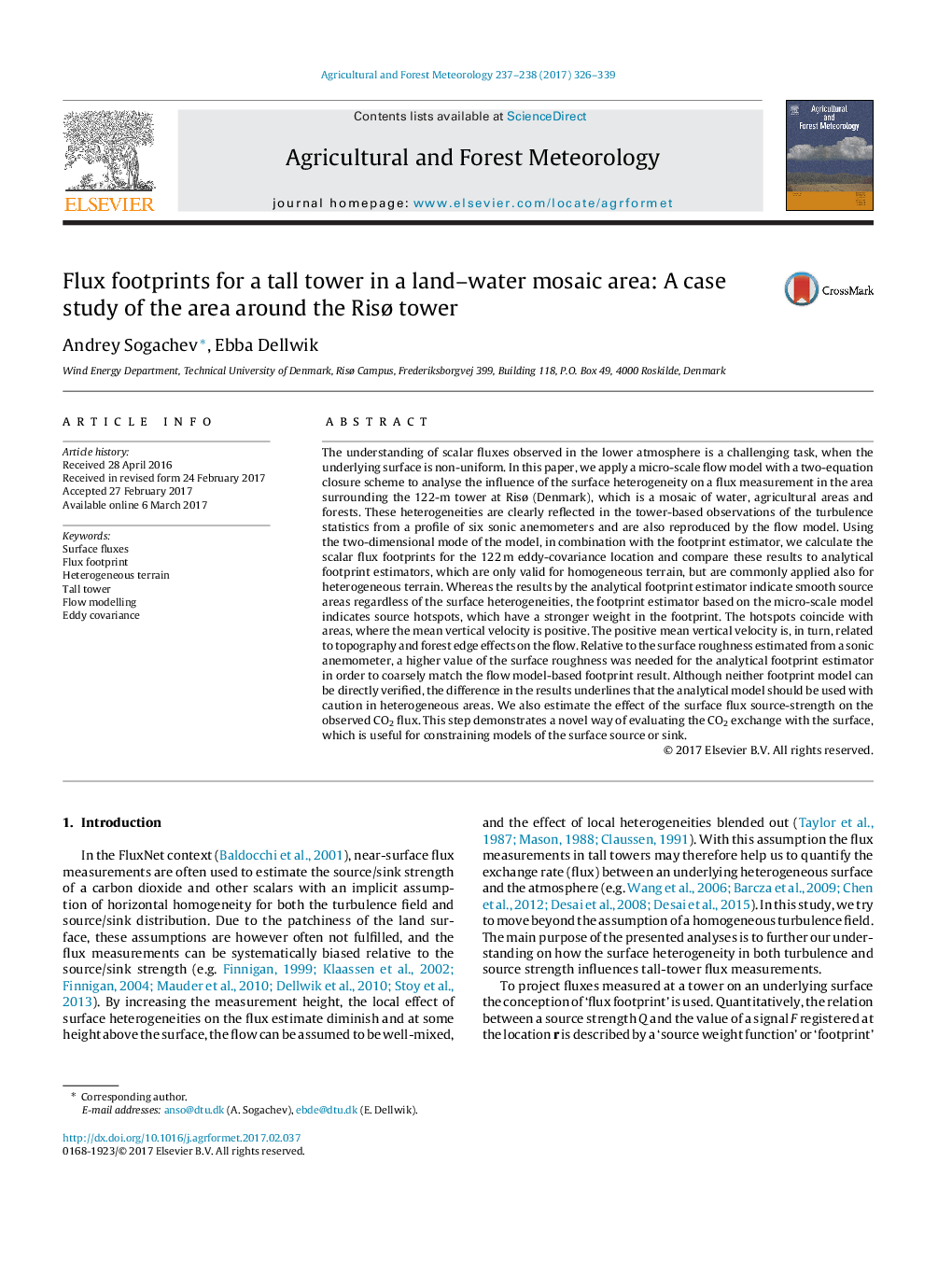| کد مقاله | کد نشریه | سال انتشار | مقاله انگلیسی | نسخه تمام متن |
|---|---|---|---|---|
| 6457945 | 1420861 | 2017 | 14 صفحه PDF | دانلود رایگان |

- Tall tower eddy-covariance observations integrate information over large areas.
- The influence from land surface heterogeneities on the flux footprint is analysed.
- Standard footprint models are found to give misleading results.
- The tall tower flux based on spatially varying source strength as well as a heterogeneous wind field is modelled.
The understanding of scalar fluxes observed in the lower atmosphere is a challenging task, when the underlying surface is non-uniform. In this paper, we apply a micro-scale flow model with a two-equation closure scheme to analyse the influence of the surface heterogeneity on a flux measurement in the area surrounding the 122-m tower at Risø (Denmark), which is a mosaic of water, agricultural areas and forests. These heterogeneities are clearly reflected in the tower-based observations of the turbulence statistics from a profile of six sonic anemometers and are also reproduced by the flow model. Using the two-dimensional mode of the model, in combination with the footprint estimator, we calculate the scalar flux footprints for the 122 m eddy-covariance location and compare these results to analytical footprint estimators, which are only valid for homogeneous terrain, but are commonly applied also for heterogeneous terrain. Whereas the results by the analytical footprint estimator indicate smooth source areas regardless of the surface heterogeneities, the footprint estimator based on the micro-scale model indicates source hotspots, which have a stronger weight in the footprint. The hotspots coincide with areas, where the mean vertical velocity is positive. The positive mean vertical velocity is, in turn, related to topography and forest edge effects on the flow. Relative to the surface roughness estimated from a sonic anemometer, a higher value of the surface roughness was needed for the analytical footprint estimator in order to coarsely match the flow model-based footprint result. Although neither footprint model can be directly verified, the difference in the results underlines that the analytical model should be used with caution in heterogeneous areas. We also estimate the effect of the surface flux source-strength on the observed CO2 flux. This step demonstrates a novel way of evaluating the CO2 exchange with the surface, which is useful for constraining models of the surface source or sink.
Journal: Agricultural and Forest Meteorology - Volumes 237â238, 1 May 2017, Pages 326-339